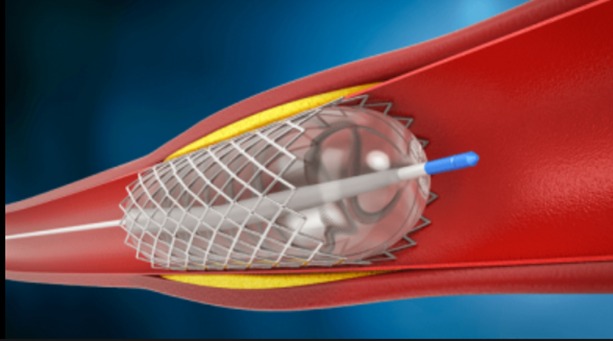BRS
A bioresorbable stent (also called bioresorbable scaffold, biodegradable stent or naturally-dissolving stent) serves the same purpose, but is manufactured from a material that may dissolve or be absorbed in the body.
The innovative concept of biodegradable stent is to use a material to provide temporary mechanical scaffolding. After that it will be bioabsorbed within a reasonable period, leaving behind the healed and remodeled artery preventing the long-term problems associated with permanent stents.
CUTTING BALLOON-VOLVERINE
What is a Cutting Balloon?
Coronary cutting balloon is intended for opening coronary arteries in those circumstances where a resistant lesion is encountered and unable to be opened with traditional balloon angioplasty.
What Makes This Product Unique?
WOLVERINE is the only balloon with fixed, microsurgical atherotomes that anchor to tissue and precisely dilate complex lesions at low pressures, with minimal risk of dissections and perforations. It is effective at maximizing lumen gain across a variety of cases including fibrotic tissue, eccentric calcium, in-stent restenosis, and ostial and small vessel disease.

1.Bumper Tip
2.Atherotomes
3. Z-Glide Hydrophilic Coating
4. Midshaft
5.Proximal Marks
6.Hypotube/Corewire Assembly
7. Manifold
Technology Overview
WOLVERINE Cutting Balloon delivers industry-leading performance with:
- Improved crossability and deliverability
- Precise, controlled cutting
- A proven mechanism of action
The result is optimal lumen gain and more thorough vessel preparation.
Atherotome Comparison
A smaller profile is achieved through the reduction in the T‑Slot height.


FFR
Fractional flow reserve (FFR) is a minimally invasive procedure to figure out how bad the narrowing (stenosis) is in your coronary arteries. Your cardiologist does this by checking the blood pressure and flow in your coronary arteries.
You may need this test when your doctor is deciding whether you need angioplasty and a stent in one of your coronary arteries. They carry blood containing oxygen to your heart muscle.
Interventional Cardiologist uses this cost-effective, simple test when imaging shows you have 50% to 70% diameter narrowing (stenosis). In some cases, providers may check fractional flow reserve in people with up to 90% narrowing.
You shouldn’t need this test if your narrowing is lower than 30% or higher than 70%. This is because it’s already clear that you don’t need angioplasty if have minimal stenosis, but you do if your number is high.
After you’ve had angioplasty and a stent put into your coronary artery, fractional flow reserve can help predict whether you’ll have a major heart issue.
